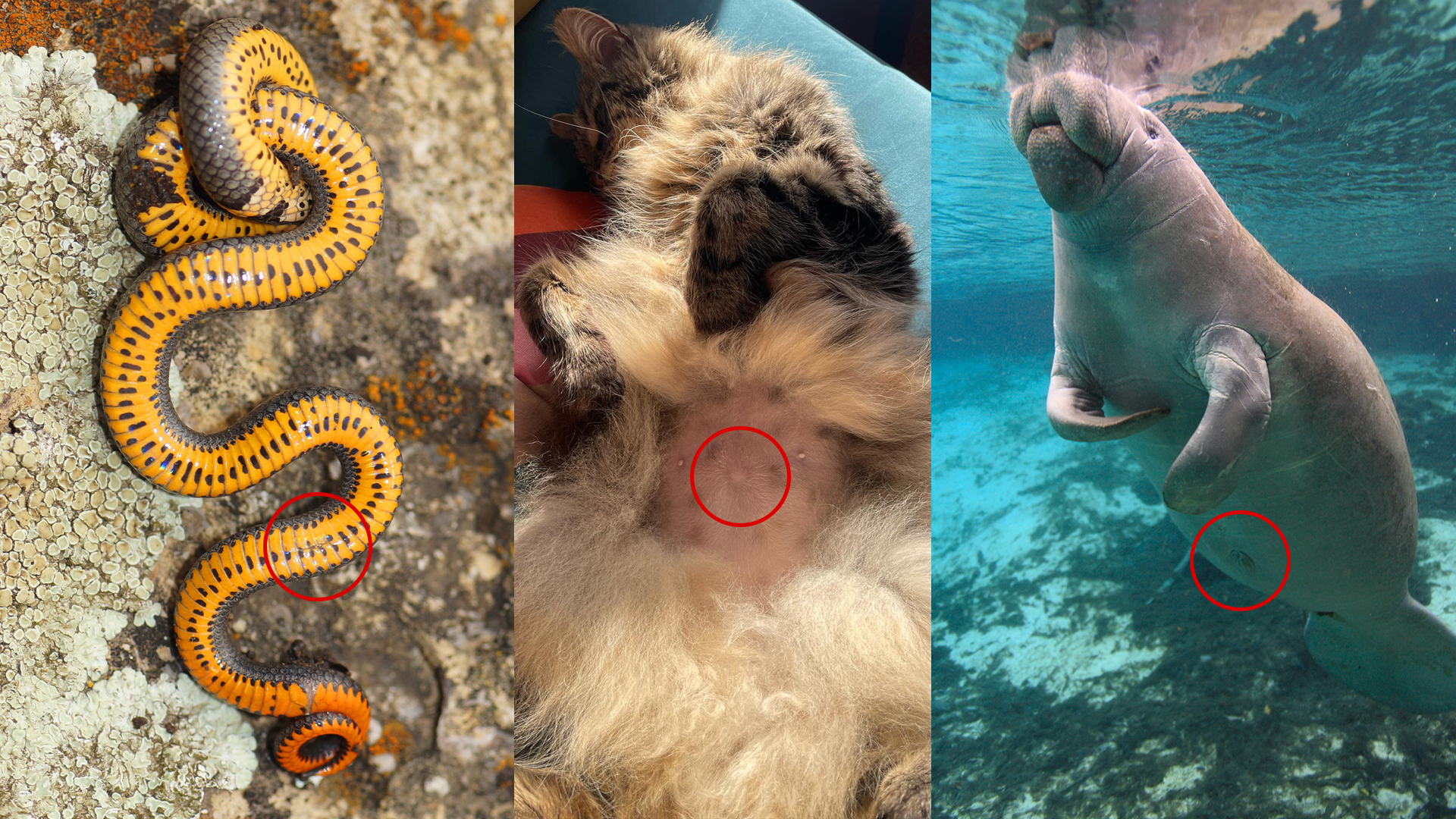Cats are no strangers to weird anatomical features. They have an odd little pocket on the sides of their ears that belongs to “Henry” for some reason, and big flappy pouches that hang off their bellies – but are these pouches adorned with a belly button?
The belly button, or navel, is a scar that forms after the umbilical cord is detached shortly after birth. The umbilical cord functions to deliver oxygen and nutrients to the embryo while it’s inside the parent, but once the baby is born, this organ becomes functionless and falls off, leaving behind a unique scar.
But how unique are these bacteria-filled lint-catchers? It turns out, not very. Yes, like all placental mammals, cats do have belly buttons.
Mammals fall into three main categories: placental mammals, marsupials, and monotremes. Placental mammals are those that gestate inside an internal womb before being born – these include cats, dogs, apes, humans, and so on. Marsupials give birth to underdeveloped young, which are fed via a yolk sack whilst inside the womb before spending the rest of their development in an external womb-like pouch where they feed on the mother’s milk – this group includes kangaroos, koalas, and wombats. Finally, monotremes, of which there are only five species, lay eggs rather than giving birth to live young.
As placental mammals are the only species that have an umbilical cord that attaches to the placenta in utero, it would be fair to assume they are the only animals that have a “belly button”. But are they?
Merriam-Webster defines the navel as “a depression in the middle of the abdomen that marks the point of former attachment of the umbilical cord or yolk stalk”. The inclusion of “yolk stalk” in this definition is an important one, as this means animals that are fed via a yolk, be it in the case of marsupials, oviparous animals (those hatched from eggs), or viviparous (live-birth) reptile and fish species, can have belly buttons too.
Animals fed via a yolk stalk, which attaches the yolk sac to the midgut, include the aforementioned marsupials during their initial gestation phase and animals that develop inside an egg. When viviparous reptiles and some fish species gestate inside the mother, they too are attached to yolk sacs rather than the placental wall. However, not all viviparous fish species are fed via a yolk sac, called lecithotrophy; some receive nutrients directly from the mother, similar to placental mammals, a process called matrotrophy.
Once you know what to look for, you’ll be seeing belly buttons everywhere, including on dinosaurs. Just take a look at these navels found in unsuspecting places, like a snake’s scaly underbelly, a cat’s shaven belly button viewing window, and this manatee’s paunchy tum.
From left to right: A Prairie Ringneck snake playing dead, Melvin the cat (who was not shaved for this article), and a Florida manatee.
Image credit: Matt Jeppson / Thierry Eidenweil / Shutterstock.com / Charlie Haigh; modified by IFLScience
While our tummy accessories are particularly unique looking, each species has its own variation of the button, although other animals don’t pour castor oil in it in the hopes of shedding a few pounds.
Source Link: Do Cats Have Belly Buttons?
